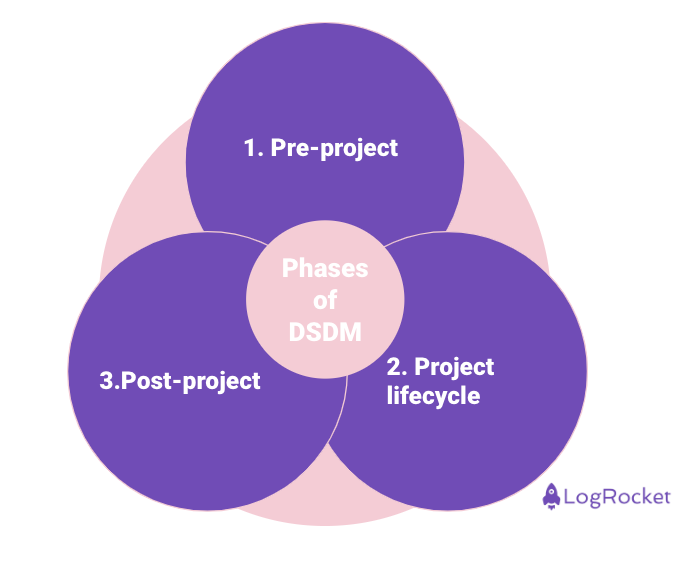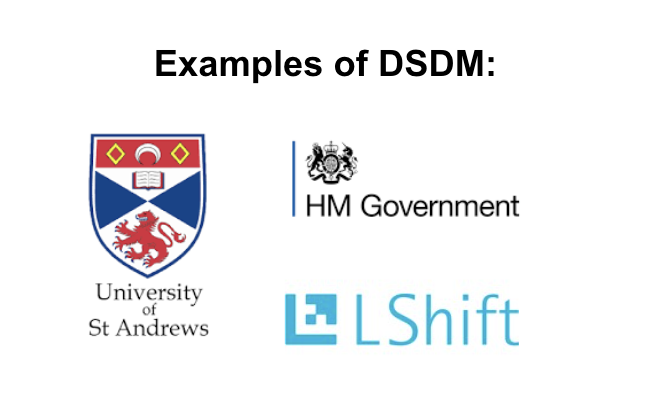When approaching a product lifecycle, you need a strong foundation and governance to enable continuous release and feedback implementation. The good news is that agile provides different frameworks for managing such project lifecycle processes. A key agile methodology is the dynamic systems development method (DSDM), which provides an iterative and incremental approach to project development.

In this article, you’ll learn more about DSDM, its core principle, its comparison with other agile frameworks, and its roles and practices.
The dynamic system development method (DSDM) was first released in 1994 as a software development method to provide some discipline to the rapid application development (RAD) method. Over the years, DSDM has evolved from a software development method to a general project management and solution delivery method and can be used for non-technical projects.
DSDM is a recognized agile framework for project management and efficient delivery solutions. It can be used in a wide variety of applications, from small software developments to large-scale commercial processes. DSDM provides the structure, foundation, and guidance required to bring project/business needs to life by implementing its solutions for operational use. DSDM further encourages productive collaboration among all parties involved in project development, including stakeholders.
To give you a better understanding of DSDM, let’s take a look at how it compares to other popular agile methodologies.
DSDM and Scrum share numerous similarities as both employ iterative and incremental approaches for product development. Scrum is an agile framework for self-managing and self-organizing teams that solve problems, manage projects, and deliver customer value during a time-limited period known as a sprint. It’s simple to learn, but tough to master. DSDM is an agile framework that focuses on enabling project stakeholders to collaborate successfully in order to achieve business objectives.
RAD (rapid application development), like DSDM, uses an iterative and incremental approach. However, these agile techniques differ. Rapid application development (RAD) is an agile methodology for software development. It’s ideal for working in a fast-paced setting.
Companies benefit from DSDM more than RAD since it provides defined, orderly stages for each part of a project. On the other hand, RAD values independence and innovative thinking. A well-structured DSDM can assist firms in reducing costs and increasing productivity.
Both DSDM and Waterfall enable organizations to plan and design initiatives before starting them. However, Waterfall allows companies to develop considerably more extensive project plans. While in DSDM, companies can modify the project’s goals while it is still in progress and also generate well-detailed designs at the early stage of the project.
Like any method, DSM leverages a group of core principles to help ensure its relevance and reliability throughout the product lifecycle.
In DSDM, delivering features and functionalities that align with the business needs and opportunities is of utmost priority. It involves collaborating with stakeholders to understand their requirements and ensure the project delivers value to the business.
DSDM employs timeboxing techniques to allocate a specific time duration during the project development. This ensures the team delivers the most essential features within the specified time frame. There’s also a need for effective planning and monitoring to ensure that milestones are met as scheduled.
Stakeholders must be continually involved throughout the development process. This enables open communication and shared knowledge across teams, as well as effective decision-making.
In DSDM, rigorous testing and continuous validation of products must be carried out throughout the development process. This ensures that the product meets a high standard of excellence and reliability when delivered. Not prioritizing product quality can cause technical debt, increased maintenance costs, and stakeholder dissatisfaction.
When building a product, it’s important to start with the key elements to create a firm foundation and technical base upon which other functionalities can be added gradually in successive iterations. Prioritizing this principle enables teams to manage complexity and maintain a solid foundation for future development.
This involves cycling through the stages of development repeatedly, testing and refining the product gradually. This allows teams to gather feedback early and often for continuous improvement of the project.
In a working environment where information flows freely and transparently, everyone has access to important updates and decisions. By doing so, you encourage active engagement between teams and stakeholders throughout the project lifecycle where feedback is provided and issues can be addressed.
Mechanisms should be set for tracking and monitoring the progress of the project throughout the development lifecycle. This allows you to manage risks and establish clear objectives that align with business goals.
The phases of DSDM can be categorized into three phases:

The pre-project phase sets the groundwork for the project. It involves carrying out a feasibility study to evaluate the business viability, identifying stakeholders, and defining the project vision and success criteria.
This phase covers the main stages of the project execution which include feasibility study, business study, functional model iteration, design, build iteration, and implementation. Here, the project is developed iteratively and incrementally with collaboration and continuous feedback from stakeholders.
In the final phase, a post-implementation review is carried out to evaluate the performance of the project and identify any areas for improvement. It ensures that the system operates efficiently and effectively. Documentation and knowledge sharing are done to gain insights from the project for future initiatives.
In DSDM, different roles are assigned to the project members before the project is commenced. Each role has its own unique responsibilities. These roles include:
Now that you have a sense of what DSDM is, let’s take a look at some successful examples of its implementation:

The University of Saint Andrews in Scotland, launched DSDM in 2014. It implemented DSDM to meet the changing needs of students, teachers, and staff while also providing high-quality software solutions to increase access, visibility, and administration of students’ curriculum data and time at the university.
LShift is a software development company that provides information technology consulting services. It conducted a case study on incorporating UX design into a DSDM project. LShift demonstrated the value of integrating UX design with agile development such as DSDM in delivering effective projects.
The UK government integrated PRINCE2 (PRojects In Controlled Environments), a project management methodology, with DSDM to respond fast to any project changes. This approach resulted in the project being completed on schedule and on budget, while also managing risks, involving stakeholders and customers on a regular basis, and ensuring that the result fulfilled business requirements.
DSDM offers a well-structured and solid framework for organizations to properly manage projects. It can be used for general project management (technical and non-technical projects) and in an iterative approach to deliver solutions fast and on budget, as well as to receive feedback. Throughout the method, DSDM enables you to focus on business goals and collaboration among all project stakeholders.
The dynamic systems development method works best when stakeholders need to work together effectively, iteratively, and with flexibility. Good luck trying DSDM with your next product!
Featured image source: IconScout

LogRocket identifies friction points in the user experience so you can make informed decisions about product and design changes that must happen to hit your goals.
With LogRocket, you can understand the scope of the issues affecting your product and prioritize the changes that need to be made. LogRocket simplifies workflows by allowing Engineering, Product, UX, and Design teams to work from the same data as you, eliminating any confusion about what needs to be done.
Get your teams on the same page — try LogRocket today.

A practical framework for PMs to use AI in ideation without sacrificing judgment, strategy, or decision quality.

A practical five minute revenue estimation method to help product managers compare ideas, drop low impact features, and prioritize smarter.

A practical guide for PMs who want to stop being bottlenecks, delegate smarter, and lead teams effectively with a clear ownership framework.

Stop letting unreliable data block features. Treat data as inventory to track quality, ownership, and ship with confidence.